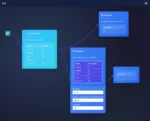In the fast-paced landscape of modern data-driven business, clarity surrounding your operational data isn’t just helpful—it’s essential. Hidden technical metadata, often overlooked yet deeply influential to data governance and insights accuracy, forms the backbone of successful business intelligence and analytics initiatives. Metadata invisibly drives decision-making processes by providing crucial context, ensuring reliability, and enabling seamless integrations. Business leaders and key technology decision-makers can no longer afford to consider technical metadata as a secondary thought or a merely invisible support layer. With expertise-driven insights, let’s unveil the significance of effective hidden technical metadata management and strategic exposure to amplify your organization’s analytics and innovation capabilities.
Demystifying Technical Metadata: Underappreciated Yet Indispensable
Technical metadata is the information that provides detail and context about data’s structure, format, transformations, storage locations, and lineage. While business and semantic metadata receive significant attention due to their direct alignment with user perspectives, technical metadata remains largely behind the curtain—visible mainly to data engineers, architects, and platform administrators.
Despite its subtle presence, technical metadata forms the foundational basis for all analytics excellence. It ensures that insights derived via platforms like Tableau Desktop and Data Extract BI Software remain accurate by clearly communicating definitions, transformations, and lineage. Technical metadata manages critical information such as API endpoints, schema versions for databases like SQL Server, dependencies in data transformation pipelines, and traceability in machine learning model development.
Organizations that overlook technical metadata ultimately risk inconsistency, compliance gaps, and technical debt—potentially leading to business-critical failures or suboptimal decision-making processes. Forward-thinking enterprises thus understand that unlocking the power of proper metadata management significantly enhances agility, data governance, and trusted decision-making processes in analytics and software innovation.
The Hidden Risks of Ignoring Technical Metadata Management
Poor technical metadata management often manifests through unclear data lineage, questionable analytical outputs, significant compliance inefficiencies, and higher operational risks. Decision-makers relying on analytics without accurate metadata risk making ill-informed judgments regarding customer behaviors, operational efficiency, or long-term strategic initiatives.
Moreover, absence or mismanagement of technical metadata leads to unclear documentation and limits data traceability, creating challenges in compliance audits, regulatory processes, or data governance strategies. Especially when dealing with advanced analytical methods such as machine learning or semantic embeddings for business intelligence, robust technical metadata becomes essential to maintain accountability for complex, AI-driven decisions.
Companies in rapidly moving industries or tech hubs, such as Austin’s thriving data-centric workforce outlined in the impact of data analytics on the Austin job market, heavily depend on effective metadata management. Clearly defined metadata governance significantly minimizes risks, optimizes resource allocation, and elevates insight credibility, directly translating into better-informed strategic decisions and increased competitiveness.
Strategic Exposure of Technical Metadata: From Hidden Insights to Visible Benefits
The strategic exposure of technical metadata across organizations yields extensive benefits, driving clarity across technological boundaries and translating complex backend data contexts into actionable insights. When technical metadata is systematically captured, documented, and seamlessly accessible, stakeholders—from technical data scientists to senior business executives—can make clearer connections between raw information sources, transformations, and final visualizations.
For example, organizations that strategically expose API endpoints and metadata information can accelerate analytics workflows, speeding up the integration process, as shown in solutions that send Facebook data to Google BigQuery using Node.js. Optimizing visual representation effectiveness through structural metadata can elevate business intelligence tool performance and ensure trust amongst teams.
Effective metadata management that strategically presents crucial lineage and transformation paths gives immense credibility and transparency, building deeper trust. Stakeholders can confidently query, validate, and interpret complex visualizations, knowing the underlying contexts are reliably documented. Strategic exposure translates hidden metadata value into powerful, decision-oriented assets that bolster competitiveness and enhance organizational responsiveness.
Innovative Techniques to Reveal Hidden Technical Metadata
Advances in technical metadata exposure now leverage innovative technologies such as machine learning, semantic modeling, and natural language processing (NLP). Platforms delivering next-level insights integrate metadata exposure as an automated and collaborative part of their capabilities. Metadata extraction and presentation even extend to sophisticated visualizations, like dynamically-created lineage maps, interactive dashboards, or augmented analytics embedded in business intelligence software like Tableau.
For instance, techniques outlined in our piece Visualizing Uncertainty: Techniques for Representing Data Confidence, illustrate how leveraging metadata-driven insights can strategically quantify and visually communicate data certainty or uncertainty levels. Similarly, advanced semantic embedding tools become powerful differentiators, going beyond keyword-centric metadata explorations anchored in robust technical metadata management practices.
Innovative boundary-pushing areas, such as those outlined in exploring quantum computing, become significantly more manageable when robust metadata management provides clarity about experimentation parameters, result lineage, and detailed historical records. Modernizing metadata management outcomes can also actively enhance inventory optimization efforts, as demonstrated in successful supply-chain analytics strategies discussed in maximizing profitability through optimized inventory levels.
Implementing Robust Technical Metadata Management: Practical Steps for Success
Adopting robust technical metadata management strategies begins with developing clear organizational policies, standardizing definitions and documentation practices, and establishing clear metadata governance accountability. Formulating a metadata-centric mindset means seeing metadata management not merely as occasional documentation processes but as ongoing opportunities to build capability for effortless decision-making.
Leveraging proactive operational strategies, businesses must adopt robust Metadata Management platforms that include clear lineage tracing, intuitive metadata analytics interfaces, API-led integration capabilities, and data cataloging features. Additionally, leaders should consider utilizing expert consultation, available leveraging specialized Microsoft SQL Server Consulting Services, alongside fast-evolving cloud data solution providers, to simplify and enhance integration complexities into manageable tactical steps.
Pragmatically, choosing the right technology platforms and ensuring well-trained data experts manage metadata are essential initial steps. Regular metadata audits, agile data governance methodologies, and processes continuously integrated into analytics workflows elevate technical metadata as an intrinsic element of data excellence—being proactive, predictable, and empowering teams to maximize ROI on analytics technology investments.
The Future Outlook: Combining Technical Metadata Management with Human Ingenuity
While tools and technology form the necessary infrastructure, the most significant metadata management investments are ultimately human capital and innovative mindsets. Successful metadata governance is not merely an IT department cognitive exercise; it is integrated strategically across the organization as people communicate clearly, transparently, and collaboratively about increasingly complex data-driven opportunities.
Human teams equipped with robust technical metadata documentation can maximize strategic impact, translate immediate insights into actionable strategic decisions, and swiftly mitigate operational or governance risks. Leaders who prioritize data-driven collaboration and metadata transparency forge resilient businesses positioned for operational excellence, strategic flexibility, and long-term growth.
As we look ahead, the best data-driven entities will elevate technical metadata from a hidden support function to strategic exposure. A culture encouraging continuous metadata enrichment, clarity, and collaboration, combined with strong human ingenuity, becomes a cornerstone of long-term competitive advantage—empowering businesses to continually innovate, deliver unprecedented insights, and maintain leadership in their industries.
Ultimately, conveying technical metadata effectively is not about revealing secrets hidden within datasheets and schema—it’s about enabling teams to build exceptional, trustworthy, and accountable analytical platforms from clearly understood foundations.
Thank you for your support, follow DEV3LOPCOM, LLC on LinkedIn and YouTube.

























